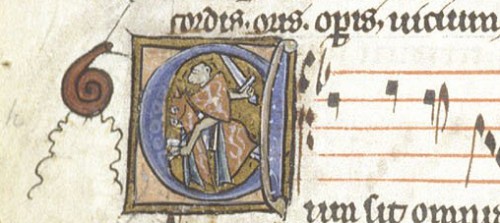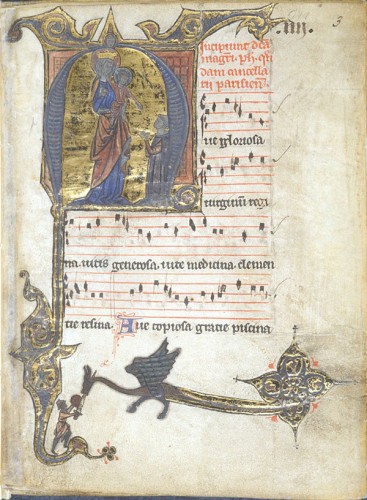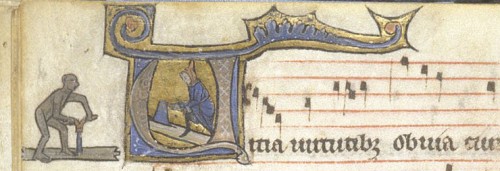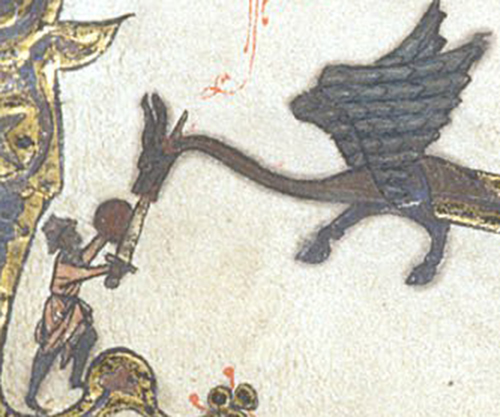
Welcome back, BoingBoingkateers! And welcome, too, to all you How-To Geeks, Geek Thinkers, Neatoramans, ((Not to be confused with the neato ramens once sold on Neatorama.)) and all other various and sundries referred to my old Mario marginalia post by Making Light. Absence makes the heart grow fonder, but a sudden spike of attention in the wider blogosphere also makes the heart grow to be less absent, so here I am, back to blogging, after long absence. And what better way to return than by returning to an old subject? ((What you say?? New content would be better? Raising expectations would only put the blog on the path to destruction.))
As you’ll all no doubt recall, the main thesis of my Mario post, ((One wonders why I didn’t just write my thesis on marginal gravity…)) and several posts before and after that, is that Gothic manuscript pages–particularly those pages found in the more de luxe manuscripts–are laid out as though the elements on the page were subject to a force of gravity that pulls–or threatens to pull–everything down toward a gaping pit in the lower margin, save, of course, the text on the page and a few anchored elements. Initial capitals and large bordered illuminations count as “anchored elements,” which, like Mario’s question blocks, are attached directly to the sky/page somehow, and everything else needs to be held up by those anchors. Thus, the snail at the head of this post, having strayed into the page’s left margin to escape the jousting monkey knight, ((As you may also recall, snails vs. knights was a joke so hilarious to medieval illuminators that they put it everywhere.)) has to be supported by a last minute “hill” composed of a scribbly “u”.
This generally recognized rule of gravity’s pull affords the clever manuscript illuminator room to make jokes based around almost-but-not-quite breaking it. Like the illuminator responsible for the snail, as it turns out. Here’s a joke I like to think of as the long-distance fakeout. Look at this page from a distance, and it seems like all the rules are being followed slavishly. The long border in the lower left margin is supported by the anchor of the central image of Mary and Jesus, and the border across the bottom and sticking out into the free space hangs off the lower-left border.

Except when you look at the point where they’re joined, you find that the connection between the two borders is actually an armored monk ((Because the image quality is so bad, I’m taking the archivist’s word that he’s a monk and not a knight.)) thrusting a sword into a marginal-dragon’s mouth:
Thus, it’s only at this single moment in time, when the knight kills the dragon, that the border is supported. Rewind the fight back a stroke, or follow it on to the dragon’s death, and the border that runs along the bottom would “fall” right off the page.
Elsewhere, the illuminator goes for the old “stupid self-destructive monkey” punchline by putting a wood-splitting monkey out in the margin, supported only by the very wood he’s splitting!

Taken with the main illumination, the joke is actually one step more complicated. This monkey has gotten so caught up in “monkey see, monkey do,” that he doesn’t realize that, unlike his human doppleganger, he’s supported only by the wood beneath him. Haha, doubly stupid monkey!
